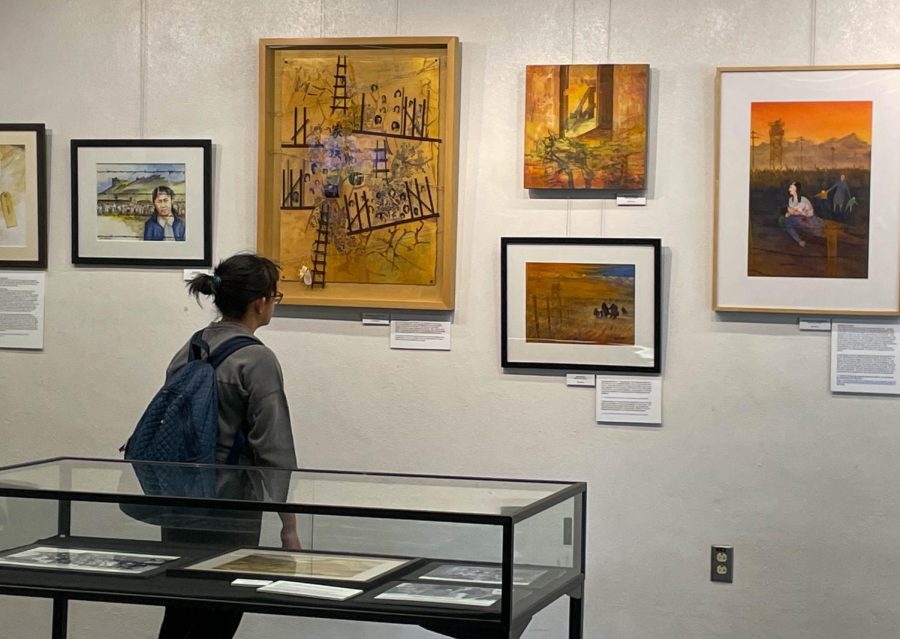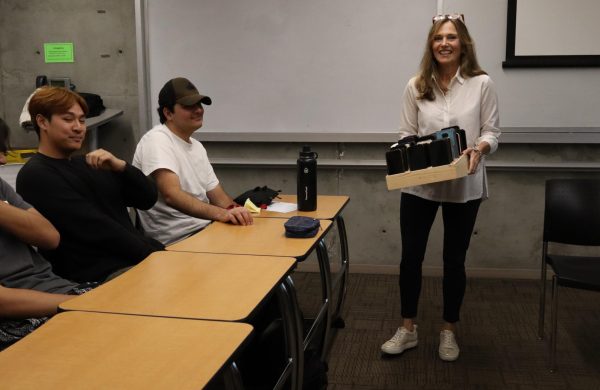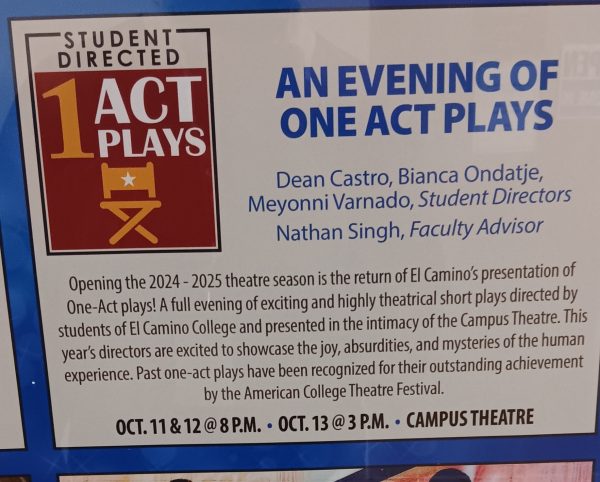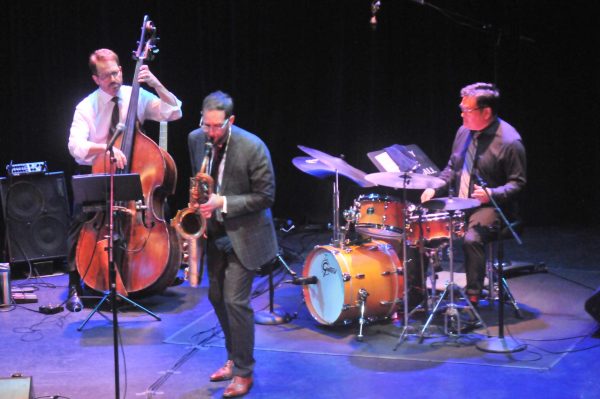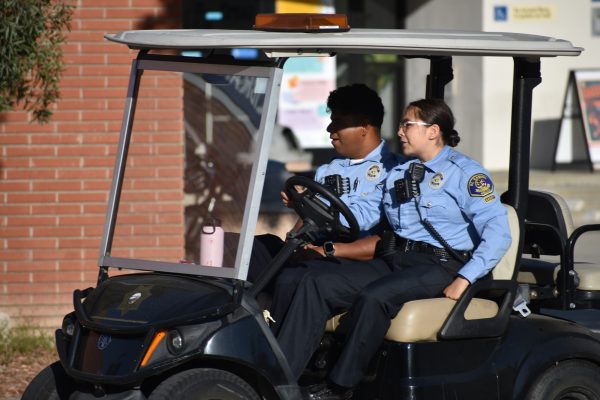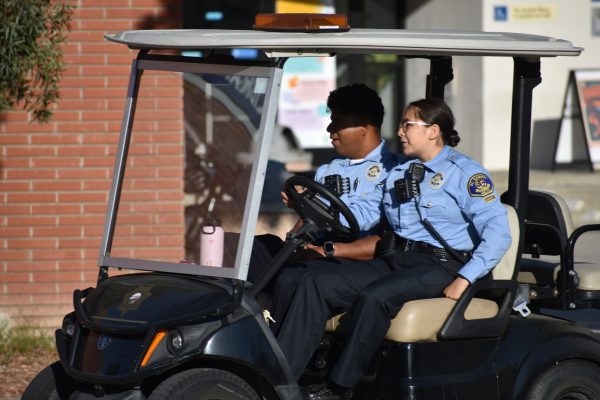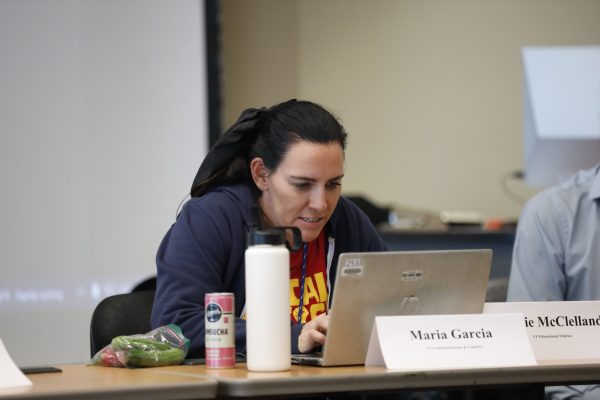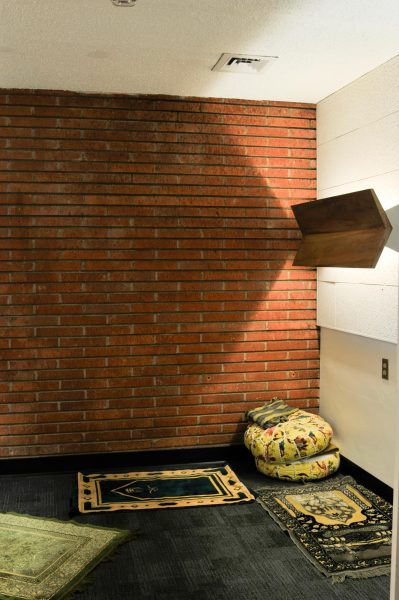New library art exhibit explores the internment of Japanese Americans
A reception for a new art exhibit “Images: America’s Concentration Camps” that explores events and experiences surrounding the Japanese American internment camps was hosted on campus at Schauerman Library on Oct. 13.
El Camino English as a second language instructor Debra Mochidome planned the event and wanted to explore the hostile environment that the camps were known for during World War II.
Mochidome is the daughter of Ruby Mochidome, a Japanese woman who was forced into the camps as a child.
Paintings by artist Alvin Takamori, which are featured in the exhibit, depict Ruby Mochidome and her family during their time in the camps. Ruby Mochidome said that one of the Takamori paintings in the exhibit used the last group photo her family took before they were all separated as a reference.
The painting shows Ruby Mochidome in the foreground with a scared and sad expression against a wired fence, while hundreds of people wait in the background.

“The guards were facing in with their guns, not out,” Ruby Mochidome said. “So you can be walking past and if you make a noise, suddenly you may have a gun pointing at you.”
The elder Mochidome hopes that the art on display, including the painting where a younger version of her is depicted, are able to show everyone the true story of what happened inside the internment camps
“You have to protect your freedoms,” Ruby Mochidome said.
Takamori said that the painting of Mochidome and her family took months and that he was motivated to continue because of the significance of the story that he wanted to convey to people.
“I want them to understand that here is a young girl being thrown into prison just because of her race,” Takamori said. “They haven’t done anything wrong other than what their ancestry was.”

Debra Mochidome said that showcasing these art pieces about what happened to the Japanese Americans highlights a growing need for remembering American history.
“The older generation is passing away and their stories and experiences are going along with them,” Debra Mochidome said. “So this is just a reminder to pay attention to history because we don’t want it to repeat for anyone.”
Editors Note: This story was adjusted to include further information and to correct errors on Oct. 17, 2022 at 2:53 p.m.


